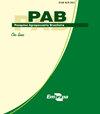Sampling sufficiency for estimating the mean of wheat traits
IF 0.7
4区 农林科学
Q3 AGRICULTURE, MULTIDISCIPLINARY
引用次数: 0
Abstract
Abstract The objective of this work was to determine the sample size necessary for estimating the means of wheat (Triticum aestivum) traits, obtained through measurement, counting, and weighing. Seventeen uniformity trials were performed with 1,790 plants harvested randomly, whose following traits were evaluated: lengths of the main stem and main stem ear (measurement); number of leaves, stems, and ears (counting); and mass of fresh and dry matter of leaves, stems, and ears (weighing). The Bartlett and Kolmogorov-Smirnov tests and Welch’s analysis of variance were performed. Skewness, central tendency, and variability were determined, and sample size was calculated to estimate the means of the 13 evaluated traits, considering estimation errors (semi-amplitudes of the 95% confidence interval) equal to 5, 10, 15, and 20% of the mean. There is a decrease in the sample size to estimate the means of wheat traits obtained through weighing, counting, and measuring, in this order. In an experiment to estimate the mean of wheat traits obtained by weighing, counting, and measuring with a maximum error of 10% of the mean at a 95% confidence interval, 117, 76, and 9 plants per treatment are needed, respectively.估计小麦性状平均值的抽样充分性
摘要本工作的目的是确定估算小麦(Triticum aestivum)性状平均值所需的样本量,这些指标是通过测量、计数和称重获得的。采用随机收获的1790株植株进行了17次均匀性试验,评价了其以下性状:主茎和主茎穗长度(测量);叶、茎和穗的数量(计数);叶片、茎和穗的新鲜和干燥物质的质量(称重)。采用Bartlett检验、Kolmogorov-Smirnov检验和Welch方差分析。确定偏度、集中趋势和变异性,并计算样本量以估计13个被评估性状的平均值,考虑估计误差(95%置信区间的半幅值)等于平均值的5%、10%、15%和20%。按此顺序,通过称重、计数和测量来估计小麦性状的平均值的样本量减少。在95%置信区间内,以称重、计数和测量得到的小麦性状均值为最大误差为均值10%的试验中,每个处理分别需要117株、76株和9株。
本文章由计算机程序翻译,如有差异,请以英文原文为准。
求助全文
约1分钟内获得全文
求助全文
来源期刊

Pesquisa Agropecuaria Brasileira
农林科学-农业综合
CiteScore
1.20
自引率
0.00%
发文量
45
审稿时长
9-18 weeks
期刊介绍:
Pesquisa Agropecuária Brasileira – PAB – is issued monthly by Empresa Brasileira de Pesquisa Agropecuária – EMBRAPA, affiliated to Ministry of Agriculture, Livestock and Food Supply. PAB publishes original scientific-technological articles on Plant Physiology, Plant Pathology, Crop Science, Genetics, Soil Science, Food Technology and Animal Science.
Its abbreviated title is Pesq. agropec. bras., and it should be used in bibliographies, footnotes, references and bibliographic strips.
 求助内容:
求助内容: 应助结果提醒方式:
应助结果提醒方式:


